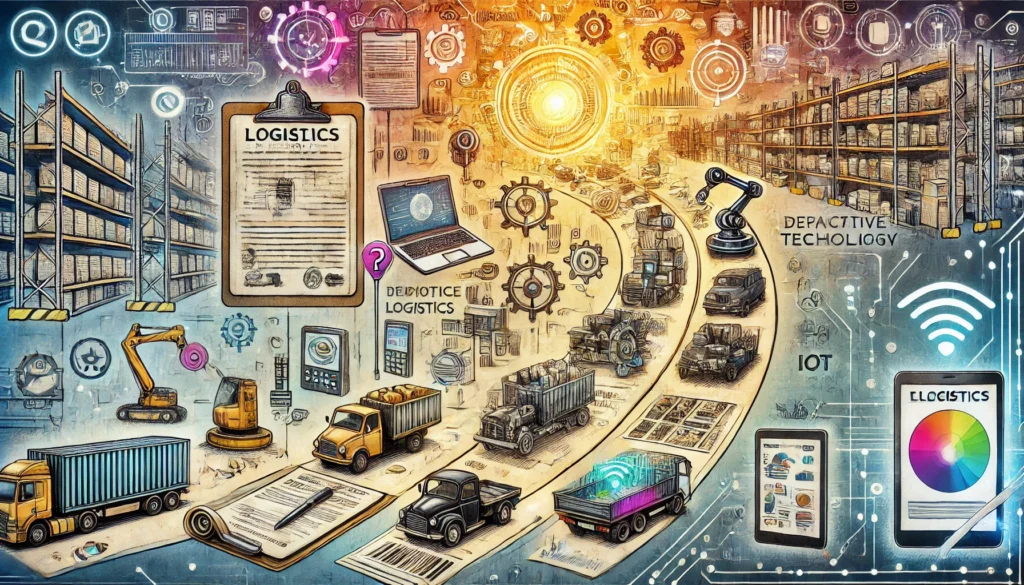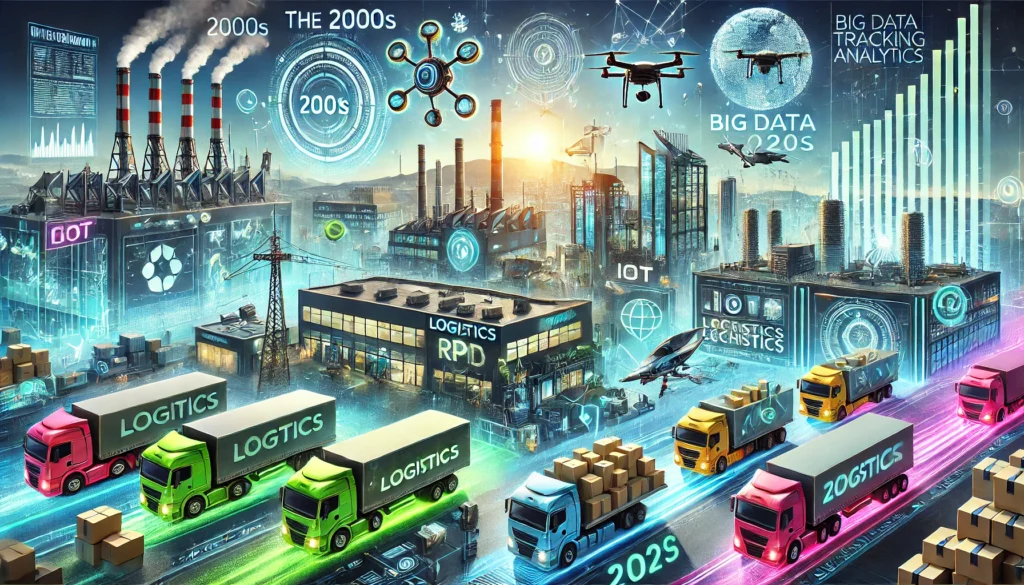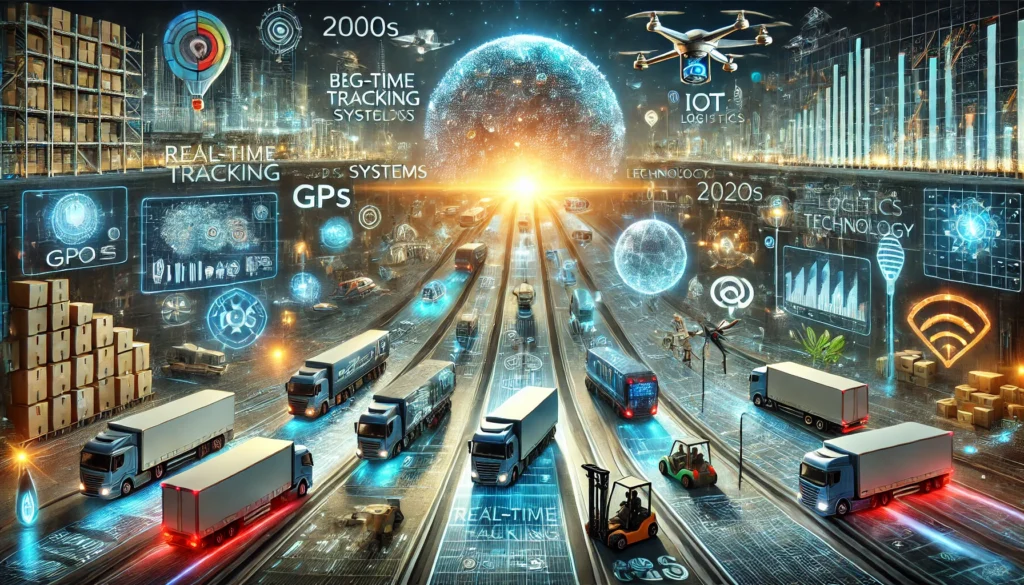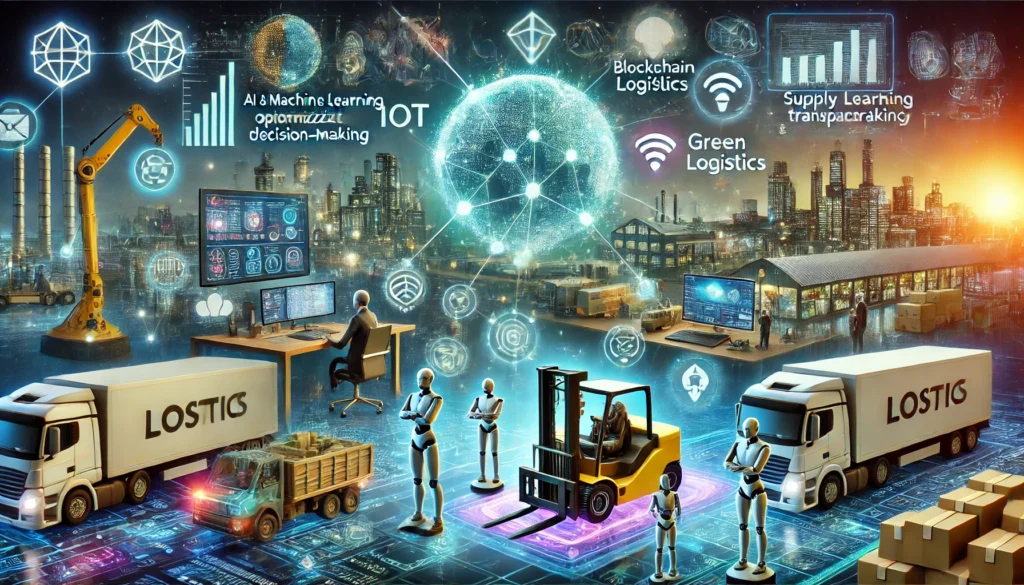Evolution of Logistics Technology
The Logistics Technology Timeline showcases the remarkable journey from traditional manual processes to cutting-edge digital solutions. Early logistics relied on basic tools and handwritten records, but the introduction of machines and automation revolutionized the field. Over time, innovations like barcoding, GPS tracking, and AI transformed the way goods move globally.
Importance of Staying Updated
Staying informed about the Logistics Technology Timeline is crucial for businesses aiming to remain competitive. Understanding the latest advancements allows companies to optimize supply chains, reduce costs, and enhance customer satisfaction. Embracing emerging trends helps businesses anticipate industry shifts and adapt proactively.
Driving Efficiency and Innovation
Technology is the backbone of modern logistics, driving efficiency and fostering innovation. Real-time tracking systems, warehouse automation, and predictive analytics streamline operations while reducing errors. The Logistics Technology Timeline highlights how integrating advanced tools improves decision-making and accelerates delivery times, setting new benchmarks in the industry.
By exploring the evolution and importance of the Logistics Technology Timeline, businesses can harness its potential to thrive in an ever-changing marketplace.

The Early Years: Foundation of Logistics Technologies
The Birth of Logistics Technology: Early Systems and Methods
The journey of logistics technology began with simple systems focused on streamlining supply chain operations. Early methods relied heavily on manual record-keeping and physical coordination, limiting scalability and efficiency.
Manual Processes and How They Evolved into More Automated Solutions
Initially, manual processes like ledgers and paper-based tracking were the norm. Over time, these methods were replaced by basic mechanical tools and later by electronic solutions, paving the way for a more structured logistics technology timeline.
Key Innovations in Transportation and Warehousing Technology
The introduction of standardized containers, forklifts, and conveyor systems transformed transportation and warehousing. These developments created a foundation for integrating automation into logistics.
1990s: The Rise of Computerized Systems and the Internet
The Role of the Internet in Revolutionizing Logistics
The 1990s marked a turning point in the logistics technology timeline, with the advent of the internet. Communication across supply chains improved significantly, enabling real-time updates and global tracking.
Introduction of Basic Computer Systems and Software for Tracking and Inventory
The decade saw the emergence of computerized inventory management systems. These tools automated data entry, reducing human errors and optimizing stock levels.
Growth of Enterprise Resource Planning (ERP) Systems
ERP systems emerged as a critical innovation, offering businesses a comprehensive way to manage logistics operations. By integrating various functions like procurement, warehousing, and transportation, ERP systems streamlined processes and boosted efficiency.
By the end of the 1990s, logistics technology had firmly transitioned from manual processes to digital systems, setting the stage for modern advancements. This evolution highlights how each milestone in the logistics technology timeline contributes to the industry’s ongoing transformation.
![]()
2000s: Advancements in Real-Time Tracking and Automation
Real-time Data Tracking: A Game-Changer for Logistics
The 2000s marked a turning point in the logistics technology timeline. Real-time data tracking revolutionized the way businesses monitored their supply chains, ensuring greater visibility and faster response times. The ability to access live updates transformed decision-making processes and reduced delays.
How GPS and RFID Technologies Improved Operations
The integration of GPS and RFID (Radio Frequency Identification) technologies greatly enhanced operational efficiency. GPS allowed for precise vehicle tracking, optimizing delivery routes, while RFID simplified inventory management by providing instant item-level insights. These advancements not only improved accuracy but also minimized costs.
Integration of Automated Systems in Warehousing and Transportation
Automation became a cornerstone of logistics in the 2000s. Warehousing processes, including sorting and inventory control, were streamlined with robotic systems. Transportation benefited from automated dispatch systems that improved load efficiency and reduced idle time. These innovations solidified the era as a foundation for smarter logistics technology.
2010s: The Age of Big Data and IoT in Logistics
Big Data Analytics Transforming Logistics Planning and Optimization
The 2010s brought a surge in the use of big data analytics, enabling companies to predict trends, manage risks, and optimize routes. This leap in data processing power allowed logistics companies to make data-driven decisions, cutting down on inefficiencies.
The Rise of IoT Devices for Smarter and More Efficient Logistics Operations
IoT (Internet of Things) devices revolutionized logistics by connecting assets, vehicles, and systems. These devices offered real-time condition monitoring, predictive maintenance alerts, and seamless communication across the supply chain, further boosting efficiency.
Robotics and Automation in Supply Chains
Advanced robotics redefined supply chains by automating repetitive tasks such as picking, packing, and sorting. Combined with AI, robotics enhanced productivity and accuracy, enabling logistics providers to meet growing customer demands.
2020s and Beyond: Future Trends in Logistics Technology
AI, Machine Learning, and Predictive Analytics Reshaping Logistics
Advanced algorithms are transforming supply chain management by enhancing forecasting accuracy and optimizing operations.
Autonomous Vehicles and Drones: The Future of Delivery
Self-driving trucks and drones are revolutionizing last-mile delivery, offering faster and more efficient services.
Blockchain Technology for Enhanced Security and Transparency
Distributed ledger systems ensure secure transactions and traceability in logistics operations.
Sustainability and Green Logistics in the Modern Era
Companies are embracing eco-friendly practices, focusing on carbon-neutral transportation and sustainable packaging.

Key Technologies Shaping the Logistics Industry
AI and Machine Learning: Optimizing Decision-Making and Forecasting
Artificial intelligence is streamlining inventory management and route planning for better efficiency.
Blockchain: Ensuring Transparency and Security in Supply Chains
With immutable records, blockchain technology is mitigating fraud and ensuring supply chain accountability.
Robotics and Automation: Revolutionizing Warehousing and Fulfillment
Robots and automated systems are speeding up sorting, packaging, and inventory management.
IoT Devices: Enhancing Real-Time Tracking and Monitoring
Internet of Things (IoT) devices provide instant updates, helping logistics managers monitor goods in transit.
How the Logistics Technology Timeline Has Impacted Businesses
Efficiency Improvements and Cost Savings in the Logistics Industry
Technology advancements in the logistics technology timeline have drastically reduced operational costs while improving efficiency.
Case Studies: How Companies Leverage Advanced Logistics Technologies
Real-world examples demonstrate how businesses use cutting-edge solutions to streamline operations and boost profits.
The Role of Customer Satisfaction in the Age of Logistics Technology
Accurate delivery times and real-time tracking enhance customer trust and loyalty.
Challenges and Opportunities in Implementing New Technologies
High Costs of Adoption and Integration
Investing in logistics technology requires significant upfront costs but promises long-term ROI.
Overcoming Resistance to Change Within Organizations
Training and a culture shift are necessary for successful implementation of new systems.
Opportunities for Innovation and Future-Proofing Logistics Businesses
Businesses that adapt quickly gain a competitive edge by leveraging the logistics technology timeline for growth.
The Future of Logistics: Embracing the Digital Transformation
The Role of Digital Twins and Simulation Models
Digital replicas of supply chains enable testing and optimization without disrupting real-world operations.
Collaboration Between Logistics Companies and Tech Providers for Innovation
Partnerships between tech firms and logistics companies drive tailored solutions for the industry.
Preparing for New Developments in Logistics Technology
Staying informed about advancements ensures businesses remain competitive in the evolving logistics landscape.


Conclusion
The journey of logistics technology has been one of remarkable evolution, transitioning from basic manual processes to sophisticated digital ecosystems. Understanding this timeline helps businesses appreciate the strides made and anticipate future advancements.
Staying ahead in logistics requires more than just awareness—it demands proactive adoption of new technologies. Companies that embrace innovations like AI, IoT, and automation gain a competitive edge, streamline operations, and meet growing customer expectations.
In today’s fast-paced world, technology is no longer optional in logistics; it is essential. By leveraging the latest tools and trends, businesses can drive efficiency, reduce costs, and achieve sustainable growth. Modern logistics isn’t just about moving goods; it’s about moving forward with technology.
FAQs:
Q: What is the logistics technology timeline?
- The logistics technology timeline tracks key innovations and technological advancements that have shaped the logistics industry over the years.
Q: How has logistics technology improved supply chains?
- Through technologies like real-time tracking, automation, and AI, logistics operations have become faster, more efficient, and cost-effective.
Q: What are some future trends in logistics technology?
- Key future trends include AI-powered logistics, autonomous delivery vehicles, blockchain for security, and sustainable practices in the logistics supply chain.
Q: What role does big data play in the logistics industry?
- Big data helps optimize routes, predict demand, improve inventory management, and enhance decision-making for logistics companies.
Q: How can businesses stay competitive with logistics technology?
- By adopting new technologies, such as IoT, robotics, and AI, businesses can streamline their operations, reduce costs, and enhance customer satisfaction.


